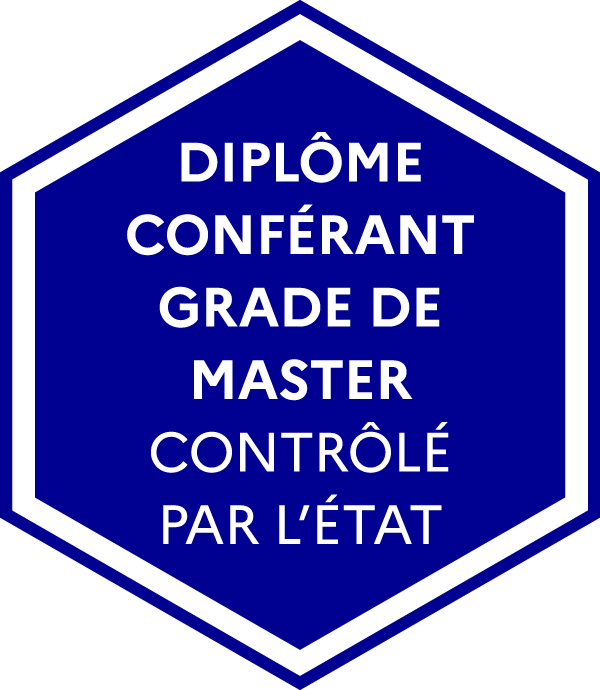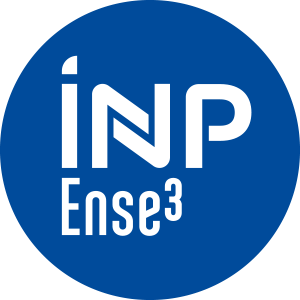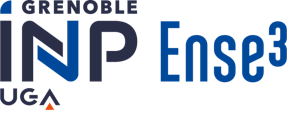Number of hours
- Lectures 42.0
- Projects -
- Tutorials 20.0
- Internship -
- Laboratory works 28.0
ECTS
ECTS 5.0
Goal(s)
Structure calculations (ME and IEN):
------------------------------------
This course sessions and associated BE aim to strengthen the implementation of solid finite element codes according to the nature of the case study: Presentation of different models for the calculation of structures and choice of representation that best suits the room and dimensioning problem posed.
Analysis of materials in service (ME and IEN):
----------------------------------------------
This course focuses on the description of service experienced by materials commonly implemented in hydraulic and thermal systems (turbine, pump, jet engine, etc.). For each type of system, the specifications and materials is presented possible solutions discussed. The aim is to develop a mastery of the analysis and design of systems through a specification, this written in context of the implementation of suitable materials.
Materials for Nuclear (only for IEN):
-------------------------------------
The objective of this course is to introduce the key concepts in materials science, including the concepts of specific bases for structural materials (mainly metal alloys) and then present the specific materials use in a nuclear environment. The first part is to introduce the systematic approach to selecting materials illustrated in a simple case and then applied to case studies in the field of nuclear energy (duct or vessel) (BE 8am: 4h presentation of CES and 4h case study ). A second part will focus on the presentation of radiation damage (hardening, swelling, irradiation creep and growth) including a quantitative approach based on the calculated CCA (2h TD). A third part will be devoted to the study of specific simplified material aging of large components of PWR (mechanisms and phenomenological laws) (6h TD).
Structural Dynamics (only for ME):
----------------------------------
It is a question of formulating a problem of structural dynamics combining strength of materials (bars and beam elements) and continuum mechanics, these approaches aimed at analyzing the linear behavior. Furthermore, it is also able to obtain a discretized version of the problem using the Finite Element Method. The first examples of structures covered in class are cases that can be solved by hand. TPs associated with the pipeline include experimental demonstration of the phenomena of resonance vibration forced: determination of the two first 2 resonant frequencies, experimental demonstration of resonant modes, determination of structural damping in each mode. At the theoretical level: application of Lagrange equations for the development equation, calculation of natural frequencies, calculation of modal vectors, comparison experiment / theory.
Didier IMBAULT
Content(s)
Structure calculations (ME and IEN) - 4h CM - 12 Numerical BE:
Formulation of a problem of structural analysis, well-posed problem; Various models available, 3D, 2D, beam, plate; Choice of boundary conditions, analysis of different problems and implementation of software
Analysis of materials in service (ME and IEN) - 10h CM - 4h: Presentation phenomena limiting the lifetime of the parts in use - Fatigue - Creep - Corrosion - Aging - Thermal effects - Presentation of design methods to fatigue and creep - Integration of design theories in relation to the terms of service.
Materials for Nuclear (IEN) - 14h CM - TD 8am - 8 am PT / BE: Material Selection: Key material properties (classification of materials), performance indices calculations and CES applications; Materials in nuclear environment radiation damage and calculation of DPA; Aging of materials and components: irradiation creep, embrittlement of the tank, the fuel behavior.
Structural Dynamics ME - 14h CM - TD 8am - 8 am PT / BE: Principle of Hamilton and Lagrange equations for discrete systems, unamortized Oscillations and amortized analysis by finite elements consist of bars systems, and Analysis finite element compounds beam systems, spectral calculation, finite Element Method.
PrerequisitesCourse Unit (Solid Mechanics) in 1st year
Course Unit (Modelling for mechanics) in 2nd year (ME, IEN)
Continuous assessment (CC1) : reports on practical works (TP, BE)
Final exam (ET1) : written exam of 3 hours
Session 2 : written exam of 3 hours replacing ET1 mark.
CC1 cannot be retaken.
The course exists in the following branches:
- Curriculum - Master's Degree in Engineering IEN - Semester 8
- Curriculum - Master's Degree in Engineering ME - Semester 8
Course ID : 4EUS4STM
Course language(s): 
You can find this course among all other courses.
French State controlled diploma conferring a Master's degree




